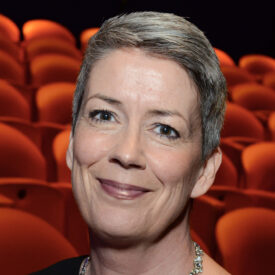World Media Group: the year ahead in media and marketing

Opinion
World Media Group members discuss their priorities for 2023.
When I sat down this time last year to write about 2022, things were looking up for marketers. Coming out of Covid, consumers were spending the money they’d saved during lockdown and a sense of normality had returned. Fast forward to February when news of Russia’s war in Ukraine hit and it appeared our optimism was short-lived.
After a summer of political unrest, we’re on the brink of another recession. So, what does all that mean for media and marketing? I asked World Media Group members how they think the current economic climate will affect our priorities in the year ahead.
What will the recession mean to brands?
Brands are faced with a difficult challenge, with this recession predicted to be long and deep.
According to Damian Douglas, managing director, EMEA at TIME and president of the World Media Group, brands should be cautious about doing too much future-gazing, which could be seen as self-indulgent during tough times.
“As we try to get through the next two or three difficult years, people will need support from brands that show empathy for what their customers are feeling,” he says. “When consumers are feeling squeezed, they need to believe in things they trust, and that they can see are imminent.”
 Douglas (pictured, left) believes this will lead to an increase in brand citizenship.
Douglas (pictured, left) believes this will lead to an increase in brand citizenship.
“We’re seeing brand storytelling around what brands mean today now that they’re more connected to societal progression than ever before. Brands are talking about who they are, what they stand for, and why they should be your brand of preference, whether that’s from a consumer or a business perspective.”
While brands may consider dialling back on advertising during a recession, staying visible to remain ahead of the competition has never been more important. When your CFO is breathing down your neck to deliver immediate sales, there may be a temptation to switch from brand to performance marketing, but now’s the time to hold firm. History has shown that those advertisers brave enough to continue running brand campaigns through a recession come out faster and stronger.
Building on sustainable marketing
With advertisers looking to save money, I wondered if there’s a danger that the extra costs of producing sustainable marketing campaigns could come under scrutiny.
Sam Adams, vice president of advertising sales, BBC Studios believes that greater public awareness on sustainability has been driving change and forcing brands to be accountable, making it difficult for them to backtrack even when times are tough. At COP26 last year, 12 of the largest UK media companies, including BBC Studios, signed the Climate Content Pledge with a commitment to supporting audience understanding and inspiring greener choices.
 Adams (pictured, right) thinks collaboration will be a big trend in 2023 and this will be reflected in sustainability across the entire supply chain.
Adams (pictured, right) thinks collaboration will be a big trend in 2023 and this will be reflected in sustainability across the entire supply chain.
“We’re already seeing brands with common goals coming together to bring audiences campaigns about sustainability that are also produced sustainably.”
She cites the BBC StoryWorks campaign for WWF, Wonderful Wildlife. The series profiles case studies of innovative, under-reported solutions across the global business community that address critical challenges, sharing diverse success stories of collaborative solutions.
At BBC Studios, collaboration means working closely with over 3,000 suppliers to make sure they’re on the same sustainability journey – looking to decarbonise and with science-based targets.
“We know that what we say onscreen must be accompanied by authentic, science-based activity offscreen, so we’ll continue to embed sustainability at the heart of what we do,” Adams says.
Douglas agrees: “There’s been lots of work done in the last two or three years economically around green transition. People want to hear about it now. It’s becoming a differentiation factor for organisations and they should talk about it – as long as they’re qualified to talk about it, and they’re authentic. And it’s a must – it’s not just a nice to have anymore.”
Purpose-driven content still centre stage
This is reflected in the work that Emma Harrison, senior creative strategist, The New York Times, is seeing coming through T Brand, the content studio out of New York Times Advertising. When it comes to understanding the world through a new lens, purpose-driven campaigns have taken centre stage, which speaks to a consumer’s need to know what a brand stands for.
 “Today it’s not enough to talk the talk, brands need to show they are credible and walking the walk too. This might be as simple as a Birkenstock campaign showing the reader they are committed to health, which is why they create shoes for healthy, balanced feet. It’s about messaging rooted in a brand and human truth that feels credible to audiences.”
“Today it’s not enough to talk the talk, brands need to show they are credible and walking the walk too. This might be as simple as a Birkenstock campaign showing the reader they are committed to health, which is why they create shoes for healthy, balanced feet. It’s about messaging rooted in a brand and human truth that feels credible to audiences.”
With people facing so many challenging issues all at once, another trend Harrison (pictured, left) is seeing is intersectional coverage, both in the newsroom and in the studio’s custom content. “A lot of brands want to talk about sustainability, which infuses every single touchpoint, from business and finance to fashion and food. It isn’t one issue, so we can’t approach it in one way. The big issues of today – sustainability, DEI, the future of work – all have a future-focus at their core,” she says. “We’ll see more and more brands telling their consumers what’s on the horizon and, importantly, what they are doing to help them navigate it.”
What does the future of work look like?
The future of work, particularly within the media and marketing industry is one of the issues keeping many of our members up at night. There’s no denying Covid brought many upsides to the industry with flexibility making it more open and inclusive for different groups of people.
Jemima Villanueva, executive director, EMEA, The Atlantic says: “I’ve always worked remotely for The Atlantic so for me, it’s been a real leveller. I did used to feel some stigma around working from home. I was always conscious of the doorbell ringing or the dog barking. I like the fact that most big meetings are virtual now.”
 The pandemic has also changed the way The Atlantic recruit.
The pandemic has also changed the way The Atlantic recruit.
“Prior to the pandemic we’d have never recruited really senior roles in Texas or in LA where we don’t have offices, but now people have moved all over the country. We’re never going back to how we were,” she says. “Instead of two main offices and 3-4 satellite offices we now have two HQs and everyone else is remote.”
That may work well for people already established in their career, but what about people just starting out? Villanueva (pictured, right) appreciates that in more entry level roles it’s hard to get a foothold, to learn, to be mentored and to form a social life around work when much of the business is remote.
Recruiting and retaining young talent
Douglas agrees that recruiting and retaining young talent is a huge challenge and we need to make a career in media and marketing more attractive and inspirational. Creating environments where people can become more involved and learn from those around them is likely to be one of the biggest challenges for managers and leaders next year, but it’s essential if we want to bring diverse talent to the industry.
The Atlantic has been looking at new ways of attracting people to create a more diverse workforce for the future.
“We have put processes in place to make hiring more formal and process driven,” says Villanueva. “When I first heard my HR colleague say this, it felt counterintuitive, but of course it makes sense. It irons out situations where people recommend a friend or an old colleague or people in their network, thus perpetuating the existing model.”
Villanueva recommends working with specialist recruitment and training companies such as Brixton Finishing School on the media and creative side and Code Your Future on the product and engineering side.
Avoiding content overload
Finally, the other issue keeping up our members up at night is the sheer volume of content that audiences are being bombarded with.
Harrison told me that Brits spend 187 hours browsing Netflix in a year – that’s just browsing what to watch!
“To some extent, we’re in the same dilemma with content,” she says. “There’s so much out there, so how do you choose what to engage with? I think about this a lot when we create stories for brands; how do we avoid adding to an endless catalogue of content? At T Brand, we find brand stories and white spaces that feel unique and are backed by audience insights.”
Our role at the World Media Group is to remove that overwhelm by filtering out the noise and directing our audiences to relevant quality content.
In the same way we may choose a Netflix show based on a friend’s recommendations, the media brands that make up the WMG strive to act as curators, surfacing and helping readers to discover premium content in the context high-quality journalism.

Belinda Barker is CEO of World Media Group, a strategic alliance of international media organisations: The Atlantic, BBC Global News, The Economist, Forbes, Fortune, Insider, National Geographic, Politico Europe, Reuters, The New York Times Company, The Smithsonian, TIME, The Wall Street Journal and The Washington Post, and partners Brand Metrics, Dianomi, Permutive and Smartology.



